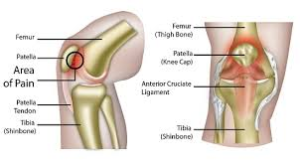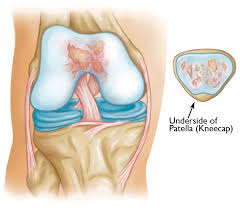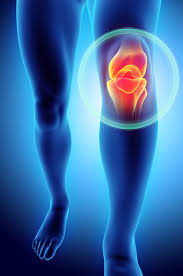Patellofemoral pain syndrome is a term used to describe pain around the kneecap, often in the front of the knee. Your knee is a complex joint and is the largest joint in the body! It consists of the femur (thighbone), tibia (shin bone) and the patella (kneecap). There are ligaments and tendons that connect the femur and tibia; ligaments hold the bones together, and tendons connect the muscles to bones. The quadriceps muscle is connected to the patella by the quadriceps tendon. The patella sits in a groove in the femur called the femoral groove.

 Patellofemoral pain syndrome can be caused by misalignment or poor movement of the patella in the femoral groove, which causes increased compression and irritation of the surrounding tissues. This poor movement of the patella in the femoral groove can be caused by alignment issues in the hips or ankles, as well as muscular imbalances in the hips, thigh muscles and lower legs. There may also be muscular imbalances or weakness in the quadricep muscles in the front of the thigh, as well as tightness in the hamstring muscles in the back of the thigh.
Patellofemoral pain syndrome can be caused by misalignment or poor movement of the patella in the femoral groove, which causes increased compression and irritation of the surrounding tissues. This poor movement of the patella in the femoral groove can be caused by alignment issues in the hips or ankles, as well as muscular imbalances in the hips, thigh muscles and lower legs. There may also be muscular imbalances or weakness in the quadricep muscles in the front of the thigh, as well as tightness in the hamstring muscles in the back of the thigh.
The most common symptom of patellofemoral pain syndrome is a dull, aching pain in the front of the knee. This pain is usually aggravated by activities that increase compression on the patellofemoral joint such as: repetitive knee bending (climbing stairs, squatting, running, jumping), and prolonged sitting with knees bent (sitting on an airplane, at a desk or in a movie theater). Pain may also be aggravated by a change in activity level (Starting a new exercise), playing surface or equipment. There may also be popping or cracking sounds in your knee when squatting, climbing stairs, or standing up after prolonged sitting.
 This condition is common in athletes, especially females and young athletes; however patellofemoral pain syndrome can occur in nonathletes as well.
This condition is common in athletes, especially females and young athletes; however patellofemoral pain syndrome can occur in nonathletes as well.
Physiotherapy treatment for patellofemoral pain syndrome will include manual therapy to restore normal movement in the kneecap and surrounding muscles, as well as exercises to correct any muscle imbalances. Exercises can include strengthening the hip muscles (glutes) and the inner quadriceps muscles, as well as stretching or releasing the outer quadricep muscles and hamstrings. Taping may be used to train the kneecap to maintain correct alignment. Training errors will also be addressed to prevent future lower extremity issues in the hips, knees, and ankles.
